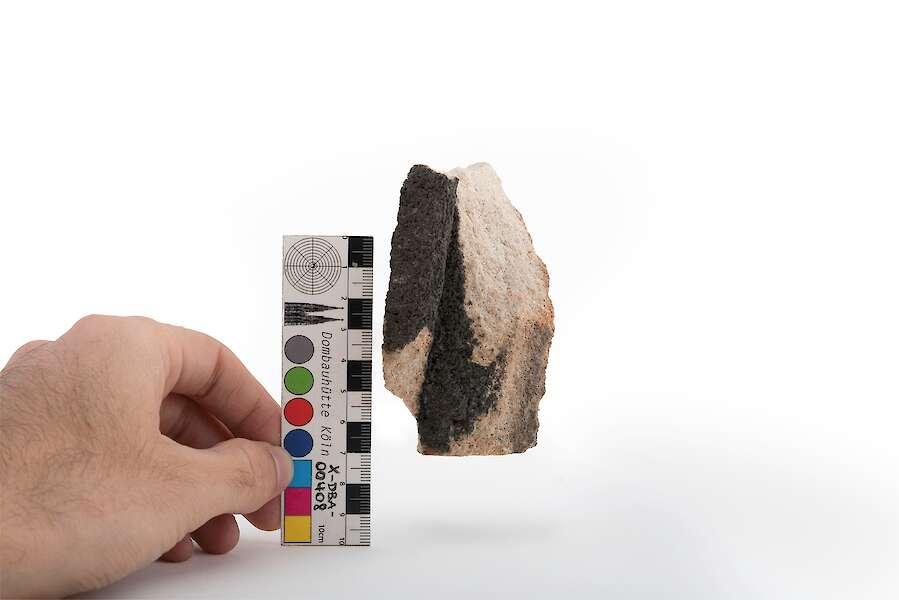A fragment of stone from Cologne Cathedral that, eleven years after its journey into space, still appears to float, is the starting point of Andrés Galeano’s project, on display from 16 May to 16 June in Cologne as part of the international Photoszene festival.
Domstein-Mission X-DBA-00408 centres on this stone fragment, which in 2014 travelled to the International Space Station with ESA astronaut Alexander Gerst and is currently housed in the Cologne Cathedral archive. The artist discovered the object during his artistic residency within the Photoszene programme “Artist Meets Archive”, when he perceived that it still appeared to float slightly. This curious and captivating observation initiated a process of research, documentation, and both artistic and scientific work, which is presented in the exhibition and the accompanying artist’s book.
The exhibition spans two locations within Cologne Cathedral: the Chapel of the Three Kings (Dreikönigensaal) and the cathedral shop (Domshop).
In the Chapel of the Three Kings (Kölner Dom), the exhibition presents an immersive installation featuring two suits: one from ESA, worn by astronaut Alexander Gerst, and another belonging to Galeano himself, adorned with insignias designed by the artist. Archival photographs, documents, images, and drawings by Galeano float against a black background, allowing visitors to observe them from an aerial perspective and become immersed in the visual narrative. The images are arranged in a floating manner and in all directions (360°), adhering to the principle of weightlessness. The project recounts, in a non-linear way, the biography of this stone fragment from the cathedral that travelled to space with Gerst in 2014. The narrative unfolds through the viewer’s perception, supported by a video accessible via QR code and an information leaflet featuring text and an image index.
Secondly, in the cathedral shop (Domshop), limited editions of the project are exhibited and cab be purchased, including the publication, postcards, insignias containing stones from the cathedral, and a 3D print of the stone fragment.
This project is supported by the Institut Ramon Llull through its international programming grants.
The Internationale Photoszene Köln was founded in 1984 as an initiative between the Cologne City Office of Culture and the German Photographic Society (DGPh), as a continuation of the photographic exhibitions organised by L. Fritz Gruber. Its primary aim was to organise the Internationale Photoszene Köln festival, which traditionally ran parallel to the global photography trade fair – photokina – and spread throughout the city, showcasing Cologne’s photographic heritage across museums, galleries, independent art spaces, and libraries.
In 2018, photokina, which was established in 1950, took place for the final time. Since 2019, the photography scene festival has returned to a biennial rhythm. Since its first edition in 1984, this participatory festival has become firmly established in the city and now features up to 100 exhibitions, attracting 125,000 visitors in 2023.







